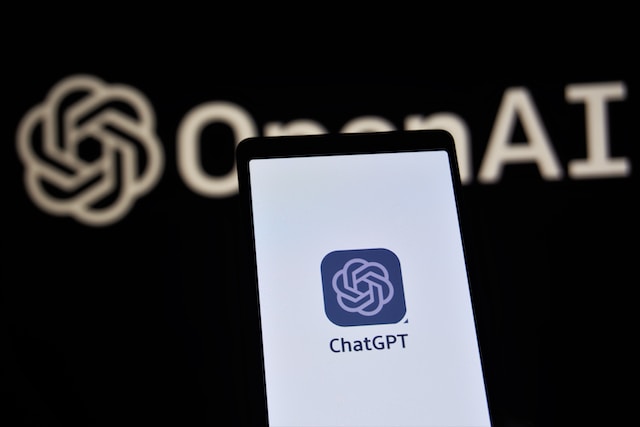
ChatGPT is an artificial intelligence natural language processing AI that can do far more than mimic human sentence structures. It is able to recognize concepts and abstract them into related concepts and return incredibly comprehensive answers back to the user.
More about ChatGPT
ChatGPT is the new era of technology, blurring the lines between man and machine. It is an amalgamation of human intelligence and machine learning, designed to provide users with a seamless and sophisticated communication experience.
Using ChatGPT, you can ask anything. From astrophysics to simple directions, it has the answers encoded inside it.
You can talk to a smart virtual assistant who can understand your needs, provide personalized recommendations, and assist you in your work. From computer programming to copywriting, it can do some smart things.
But that’s not all! ChatGPT is also an excellent tool for businesses looking to engage with their customers. With its ability to understand natural language, ChatGPT can interpret customer queries, provide solutions, and effectively address concerns. This helps businesses improve customer satisfaction, build loyalty, and ultimately drive sales.
ChatGPT’s AI technology is constantly evolving, adapting to new trends, and improving its ability to become smarter, faster, and more efficient. Its advanced algorithms can read, understand, and analyze any type of data, making it a reliable resource for all kinds of industries, from healthcare and education to finance and retail.
Key Features and Capabilities of ChatGPT
ChatGPT, a remarkable advancement in the field of natural language processing (NLP), boasts a range of key features and capabilities that set it apart as a powerful NLP tool.
Language Understanding and Generation
ChatGPT exhibits a high level of proficiency in both understanding and generating human language. It can grasp the meaning and context of user queries and responses, allowing for meaningful and context-aware interactions. It excels in generating coherent, contextually relevant responses, making conversations with the technology feel more human-like.
Contextual Responses
One of the application’s notable capabilities is its ability to maintain context within a conversation. It can remember and reference information from previous parts of the conversation, resulting in more coherent and engaging dialogues. It adapts its responses based on the flow and context of the ongoing conversation, ensuring relevance and coherence.

Multimodal Capabilities (Text and Image Inputs)
ChatGPT is not limited to text-based interactions. It can also handle image inputs, making it versatile and adaptable. ChatGPT can accept text descriptions or queries alongside images, enhancing its understanding and response capabilities. This feature makes ChatGPT useful for tasks that involve both text and images, such as generating image captions or answering questions about visual content.
Handling of User Queries and Commands
ChatGPT is equipped to handle various types of user queries and commands effectively.
- Question Answering: It can provide informative and contextually relevant answers to a wide range of questions, from general knowledge to domain-specific inquiries.
- Task Execution: The program can perform tasks based on user instructions, such as summarizing text, translating languages, or generating code snippets.
- Creative Writing: It can generate creative content, including poetry, storytelling, and other expressive forms of writing.
Applications of ChatGPT
ChatGPT’s versatility and advanced natural language processing capabilities have paved the way for a wide array of applications across different industries and use cases.
Content Generation with ChatGPT
ChatGPT serves as a powerful tool for generating a wide range of content.
- Blog Posts and Articles: The program can assist in creating high-quality written content for blogs, websites, and news platforms, saving time and effort for content creators.
- Marketing Copy: It aids in generating marketing materials, including ad copy, product descriptions, and promotional content.
- Creative Writing: The program can be employed to write poetry, short stories, and creative content, making it a valuable resource for authors and creative professionals.
Customer Support Automation
In the realm of customer support, ChatGPT offers automation solutions that enhance the user experience. It can handle routine customer inquiries, offering quick and accurate responses, thereby reducing the workload on human support agents. Its round-the-clock availability ensures that customers can access assistance at any time, increasing customer satisfaction and loyalty.
Personal Assistants and Chatbots
ChatGPT can power chatbots and virtual personal assistants, revolutionizing how individuals and businesses interact with technology. ChatGPT-based virtual assistants, such as those used by Apple and Google, provide users with information, reminders, and the ability to control various smart devices.
E-commerce platforms employ ChatGPT-driven chatbots for customer assistance, helping users navigate products and services, answer queries, and provide recommendations.
Content Moderation
ChatGPT plays a crucial role in content moderation, ensuring safe and appropriate content on online platforms. It helps in automatically screening and filtering user-generated content to identify and remove inappropriate or harmful material. It ensures that user-generated content complies with platform guidelines, maintaining a safe and respectful online environment.
Writing Assistance
Writers and content creators benefit from ChatGPT’s capabilities in several ways. It can assist in proofreading and editing written content, enhancing grammar and style. It aids in brainstorming and generating ideas for articles, stories, or creative projects.

Challenges and Ethical Considerations
As ChatGPT and similar natural language processing (NLP) technologies continue to advance, they also present challenges and ethical considerations that demand attention.
Biases in ChatGPT’s Responses
One of the primary challenges in the development and use of ChatGPT is the potential for biases in its responses. It learns from vast datasets that may contain biases present in human language, resulting in responses that reflect societal biases. Developers work on reducing biases through data curation and fine-tuning, but achieving complete bias elimination remains a challenge.
Misuse and Ethical Concerns
The power of ChatGPT also raises concerns regarding its misuse. It can inadvertently propagate misinformation or engage in harmful content generation. It can be exploited for malicious purposes, including generating malicious code, spam content, or engaging in abusive interactions.
Data Privacy and Security
Data privacy and security are critical ethical considerations associated with ChatGPT. Concerns arise about the collection and handling of user interactions and data privacy when using chatbots or virtual assistants powered by ChatGPT. Inappropriate data handling or breaches could lead to the exposure of sensitive information.
Accountability and Responsibility
Determining accountability and responsibility in cases where ChatGPT is involved can be challenging. Questions arise regarding the authorship and ownership of content generated by the program, particularly in creative and professional contexts. Establishing clear legal and ethical guidelines for the use of ChatGPT is an ongoing challenge.
Addressing Ethical Considerations
Addressing the ethical considerations surrounding ChatGPT is crucial. Developers aim to make it’s decision-making processes transparent and understandable to mitigate ethical concerns.

Involving the broader community and stakeholders in discussions and decisions about ChatGPT’s usage and development is essential.
The Evolution of ChatGPT
ChatGPT, like other natural language processing (NLP) models, has undergone a significant evolution since its inception, driven by continuous research and development efforts.
From GPT-3 to ChatGPT
The evolution of ChatGPT begins with its predecessor, GPT-3. GPT-3, developed by OpenAI, laid the foundation for ChatGPT. It was a massive model with 175 billion parameters, capable of handling a wide range of natural language tasks. OpenAI introduced chat capabilities into GPT-3, resulting in the emergence of ChatGPT as a specialized variant for conversational AI.
OpenAI’s Research and Development
OpenAI’s continuous research and development initiatives have played a pivotal role in ChatGPT’s evolution. Ongoing fine-tuning and optimization have improved its ability to generate contextually relevant response. Efforts to integrate both text and image inputs have expanded ChatGPT’s capabilities, making it more versatile.
Advancements in Responsiveness and Safety
ChatGPT’s evolution includes enhancements in responsiveness and safety. OpenAI has made strides in reducing instances of ChatGPT generating inappropriate, harmful, or biased content. Introduction of safety protocols and reinforcement learning from human feedback has made ChatGPT more reliable and responsible.
Real-World Applications and Feedback Loops
ChatGPT’s evolution has been influenced by real-world applications and feedback.
- User Feedback: User feedback has played a vital role in shaping ChatGPT’s development, identifying areas for improvement.
- Industry Adoption: ChatGPT has found adoption across various industries, leading to real-world testing and application.

The Path Forward
The evolution of ChatGPT continues, with a path forward focused on innovation and growth. OpenAI is likely to release further iterations of ChatGPT, with enhanced capabilities and reduced limitations. ChatGPT is expected to integrate with emerging technologies, including augmented and virtual reality, expanding its applications.
ChatGPT is a groundbreaking innovation that brings together the power of artificial intelligence and human-like communication. Its ability to understand and generate natural language makes it an invaluable tool for a wide range of applications, from customer support automation to content moderation and writing assistance. However, as with any powerful technology, there are challenges and ethical considerations that need to be addressed, such as biases in responses, misuse, data privacy, and accountability. Through continuous research, development, and community involvement, ChatGPT’s evolution will pave the way for a future where human-machine interactions are seamless, efficient, and ethically sound. The possibilities are endless, and with each advancement, ChatGPT brings us closer to a world where artificial intelligence and human intelligence coexist harmoniously.
